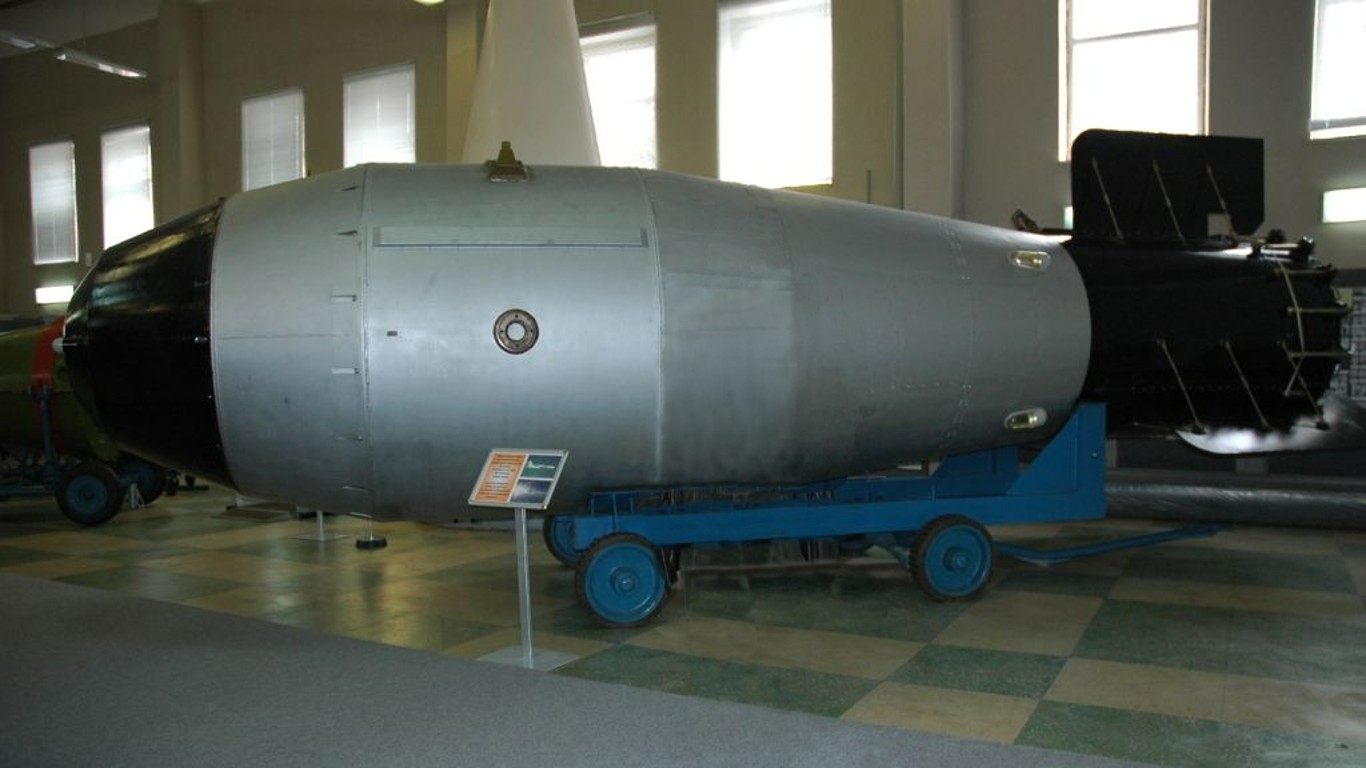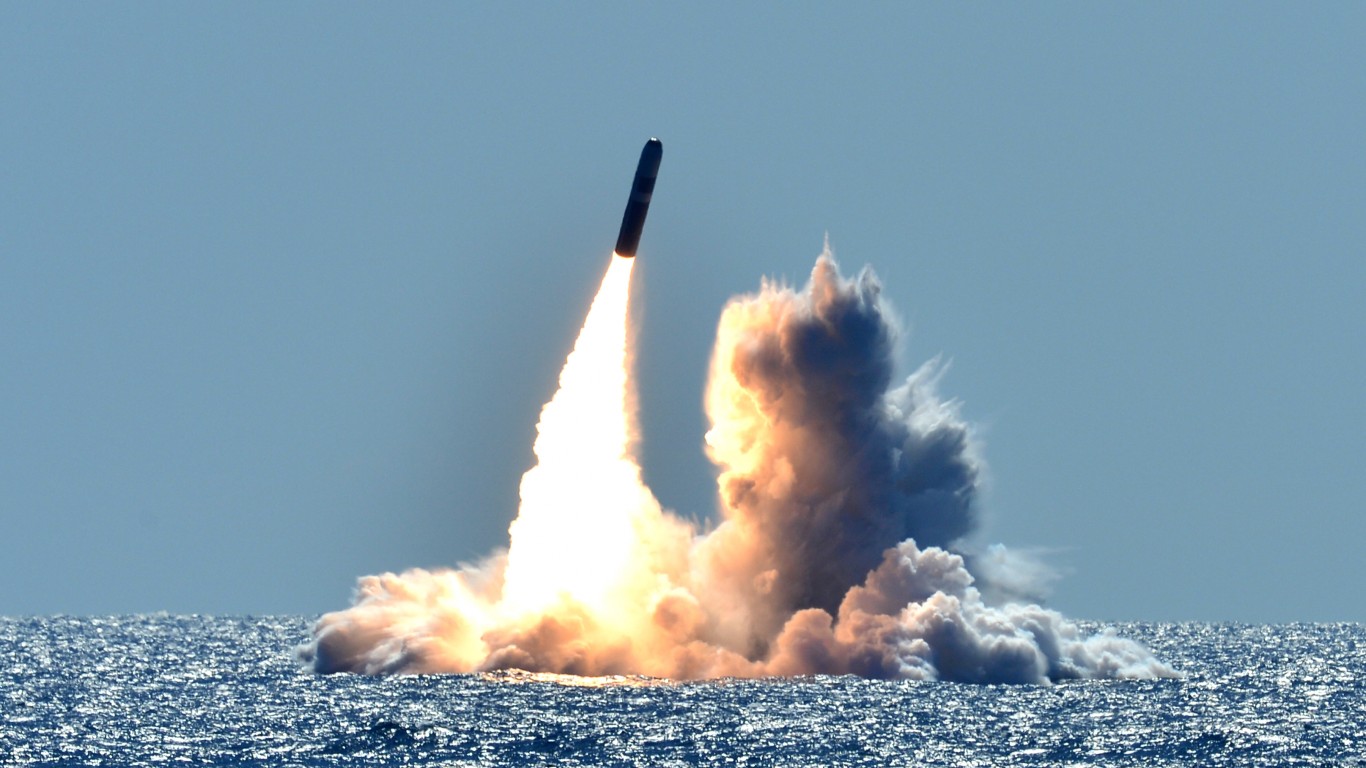
As weapons have changed over the years, the tactics of warfare have evolved as well. It goes without saying that the guns and munitions of the Civil War would not be a match for a nuclear bomb in their lethal force. Accordingly, 24/7 Wall St. has put together a list of some of the deadliest weapons that militaries have at the ready today. The weapons are listed in alphabetical order.
One of the main goals of war is to eliminate enemies with precision and lethality. At the beginning of the 20th century wars were fought with small arms and cannons, but as technology has improved, so has the capability of militaries across the world to carry out operations with increased precision and lethality.
Our list was inspired by the 1964 paper Historical Trends Related to Weapon Lethality, which assigned a lethality score to weapons throughout history. 24/7 Wall St. list, however, concentrates on modern warfare weapons. This list is by no means comprehensive, but aims to reflect some of the deadliest weapons that are currently in the arsenals of the world’s militaries.
While we aimed to list only weapons that are part of the arsenals of global military powers, it is not always clear that they are as some have been outlawed by various military conventions and accords. We do not know for certain but there is evidence to suggest even some of the outlawed weapons are still in some military inventories around the globe. (Chemical warfare is also banned. Here are the world’s most dangerous chemical weapons.)
For example, Human Rights Watch has reported that Russia has used cluster munitions in its current invasion of Ukraine, even though over 110 governments ratified a treaty to remove these munitions from the battlefield. (The U.S. aims to help. Here are all of the weapons the U.S. has committed to Ukraine since the invasion.)
The weapons on this list range from some of the deadliest small arms used to carry out operations in close combat to bombs capable of wiping whole cities off the face of the Earth – and everything in between.
Here’s a look at some of the deadliest weapons in arsenals across the world.
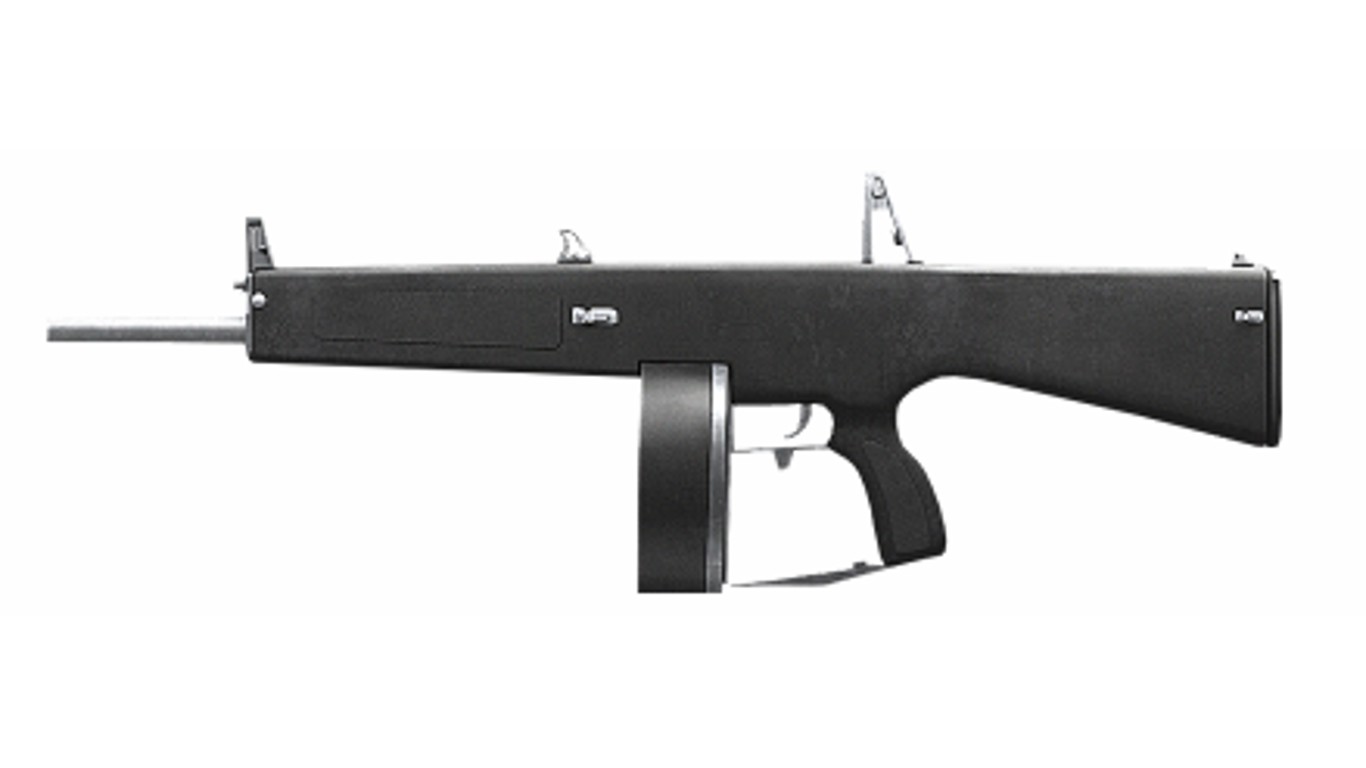
1. AA-12
>Type: Shotgun
The AA-12 shotgun is a tactical shotgun with a magazine capacity of up to 32 rounds originally designed in the early 1970s. The automatic gas-powered shotgun was designed for short-range situations, whether in city streets or jungles. The AA-12 is regularly used in close-quarters combat.
[in-text-ad]
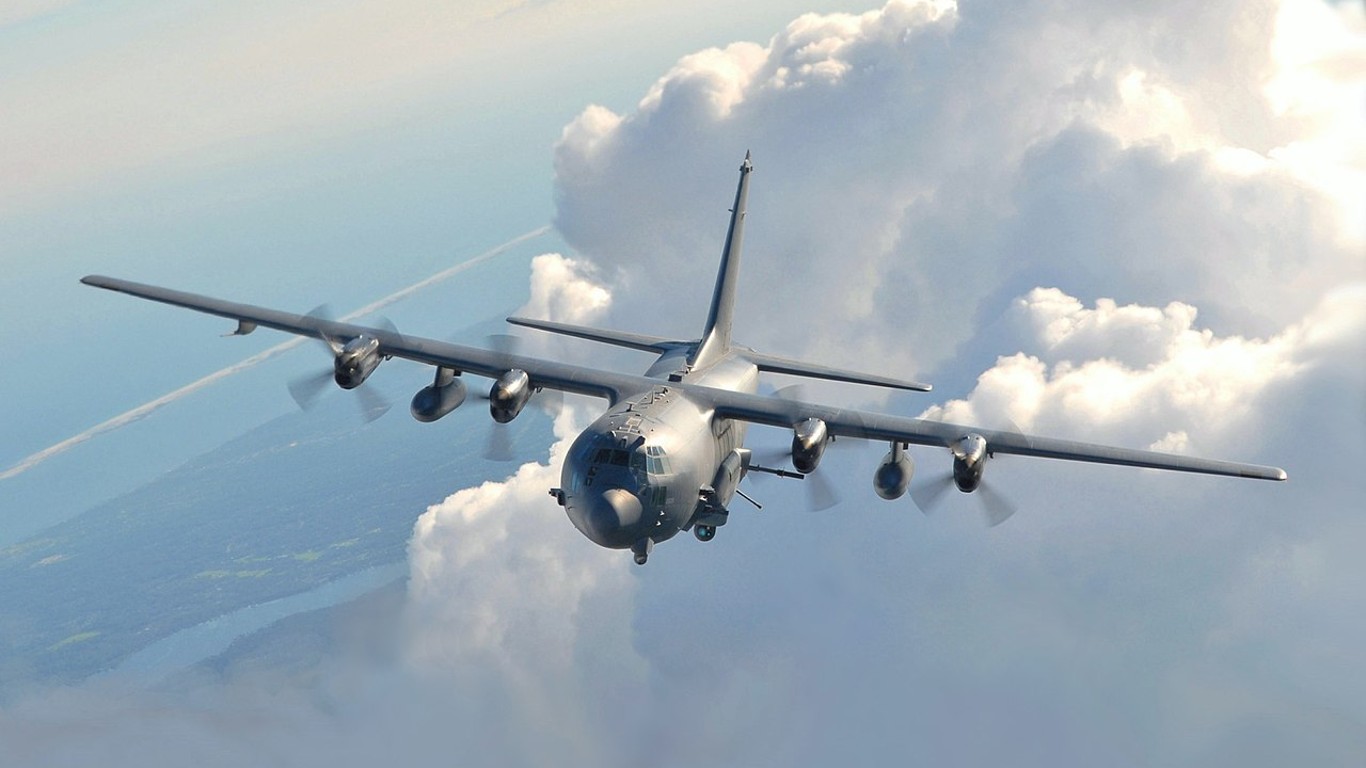
2. AC-130
>Type: Gunship
This gunship’s primary missions are close air support and armed reconnaissance. The aircraft incorporate side-firing weapons with armaments including 40mm, 105mm cannons, and 25mm gatling guns. The AC-130 circles battlefields, attacking targets with heavy fire.
3. AH-64 Apache
>Type: Helicopter
According to its manufacturer Boeing, the Apache helicopter is the world’s most advanced attack helicopter. The attack chopper was originally developed in 1984, and newer iterations have come since. These have been flown all over the world in U.S. military operations to deadly effect. Its ordnance includes 16 Hellfire missiles, 76 2.75-inch rockets, and a 30 mm chain gun capable of firing over 600 rounds per minute.
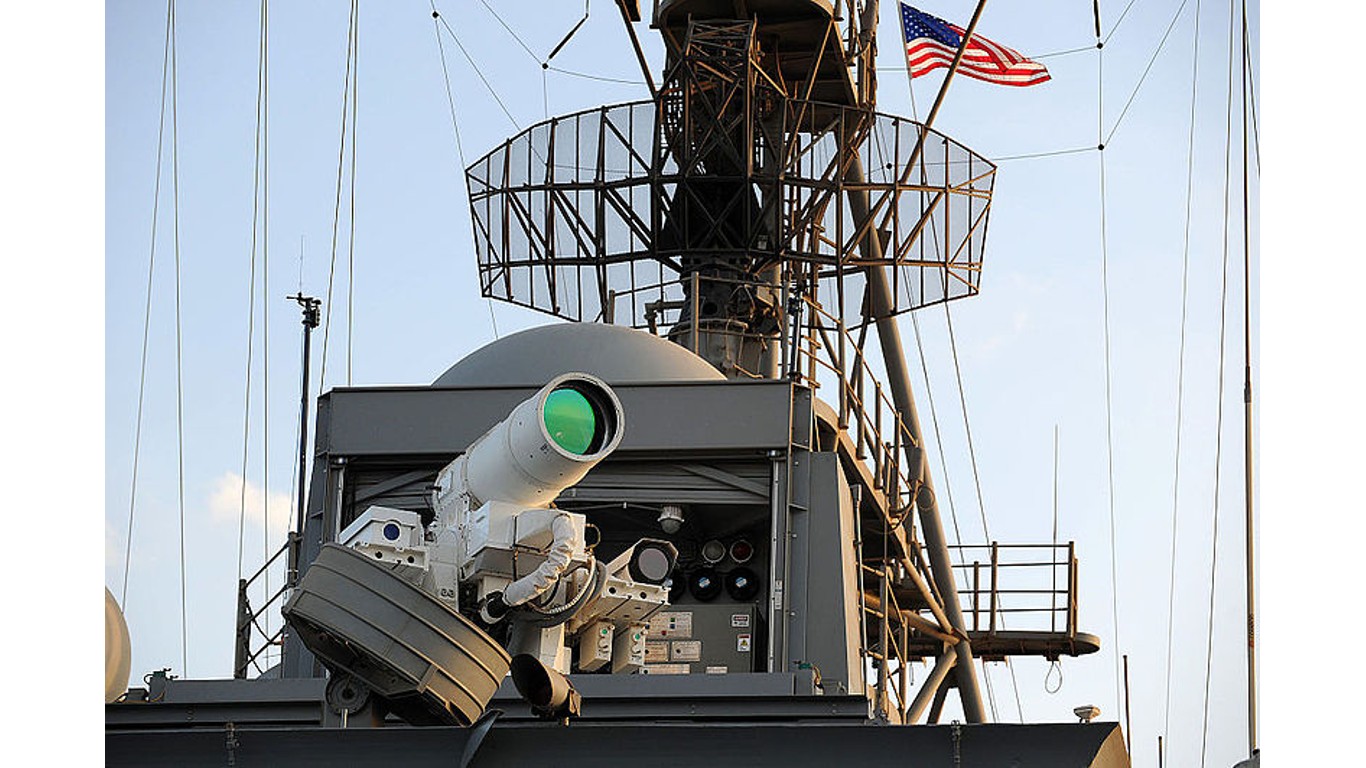
4. AN/SEQ-3
>Type: Laser weapons system (LaWS)
Laser weapons, which have been common in science fiction works, are now a reality. This laser weapons system can be mounted on U.S. naval vessels, and is capable of shooting a concentrated laser with the power of up to 30,000 watts. Such a laser would be capable of shooting down UAVs and other fast moving targets at sea. The LaWS is also powerful enough to ignite and detonate explosives and armaments on other enemy vessels with devastating force.
[in-text-ad-2]
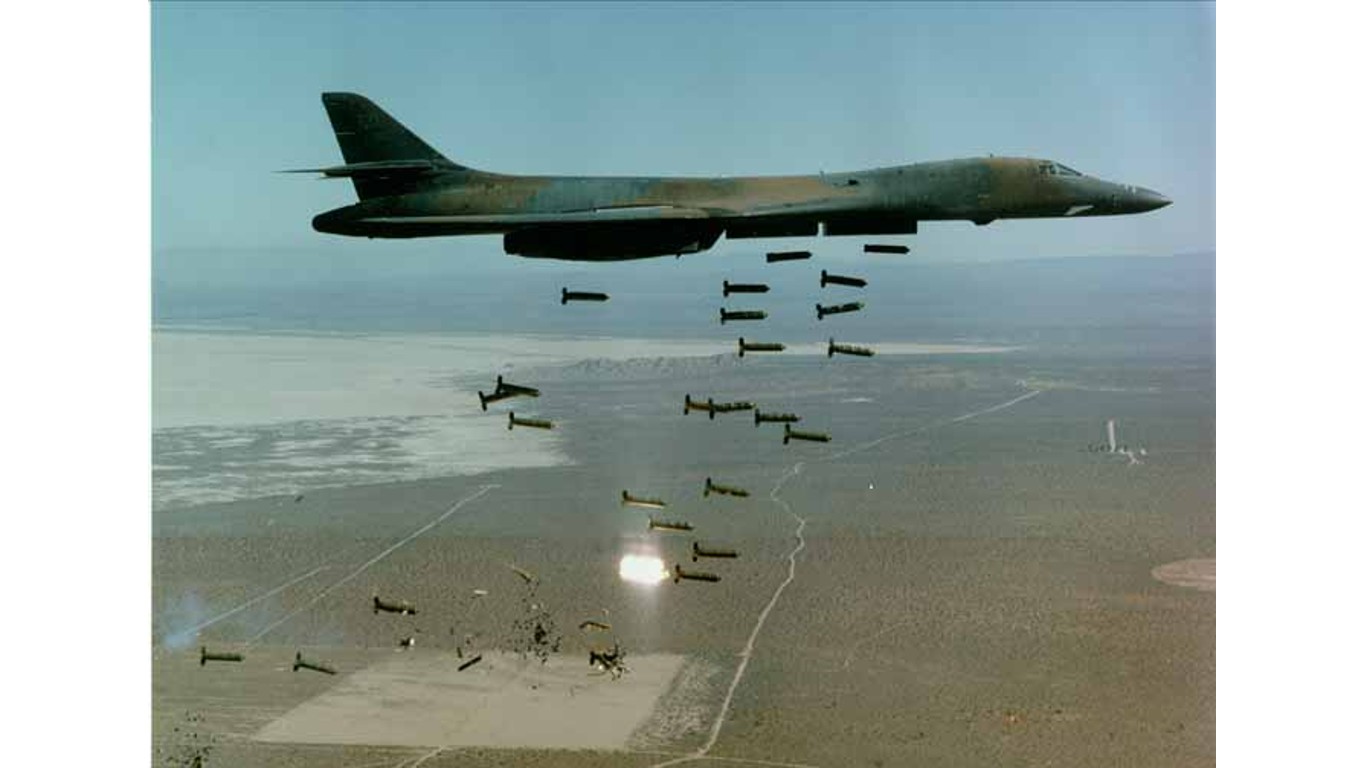
5. Cluster bombs
>Type: Bomb
Cluster bombs are so lethal in the battlefield the Oslo Convention in 2008 banned them. The international ban came into force in 2010. Basically, these bombs, which are dropped from aircraft or fired from the ground or sea, release tens of hundreds of submunitions capable of covering several football fields. Despite the ban, many militaries still have them in their arsenal. Russia has reportedly been using them recently in Ukraine.
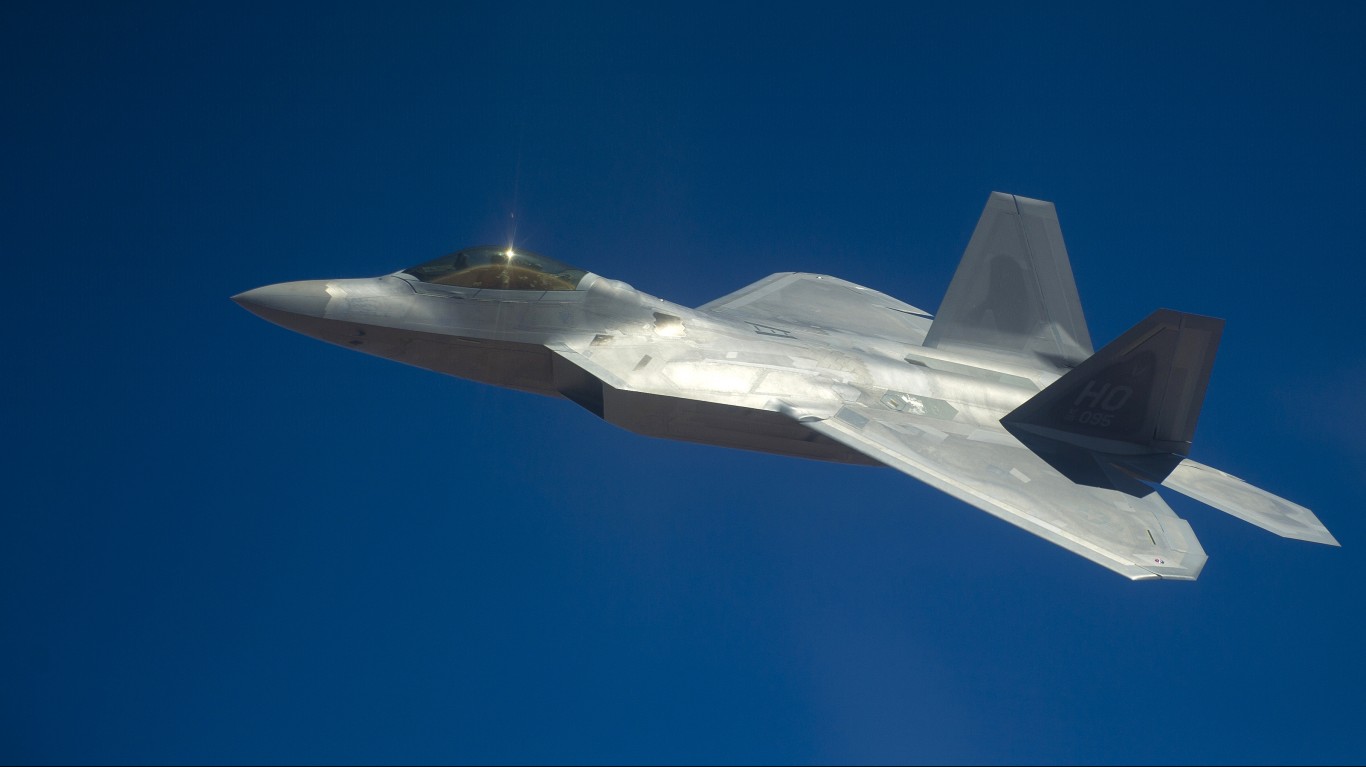
6. F-22 Raptor
>Type: Fighter jet
The F-22 Raptor is perhaps the most technologically advanced fighter jet. It can be configured multiple ways depending on the deployment, whether it is air-to-air combat or air-to-ground attacks. The craft is outfitted with numerous bombs, laser-guided missiles, and more. The F-22 engines produce more thrust than any current fighter engine and are capable of cruising at supersonic speeds without using afterburner.
[in-text-ad]
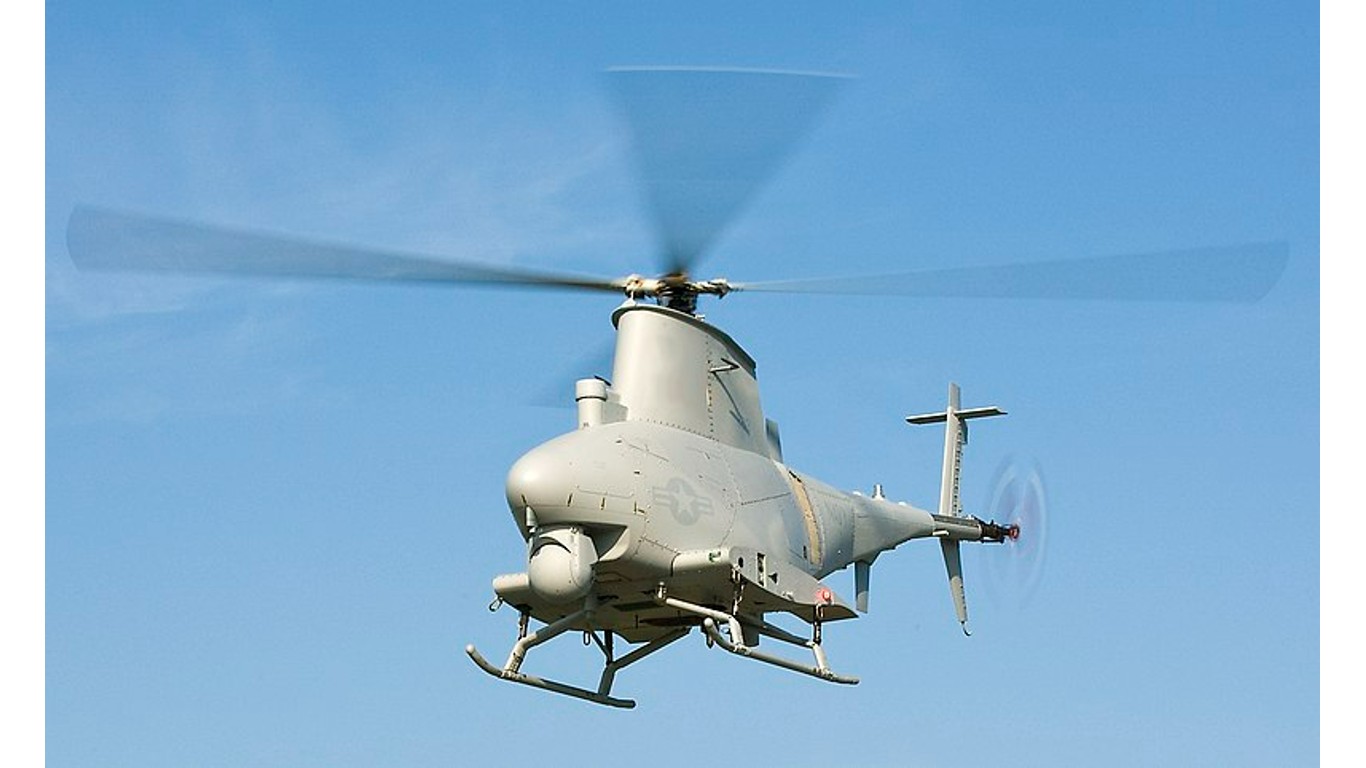
7. Fire Scout
>Type: Helicopter drone
The Fire Scout is a helicopter drone made by Northrop Grumman. This drone is equipped with the Advanced Precision Kill Weapon System, which consists of Hydra 70 unguided rockets with a laser guidance kit. The drone has over 10 hours of endurance and a range of over 1,000 nautical miles. The Fire Scout has seen thousands of hours in real-world operations.
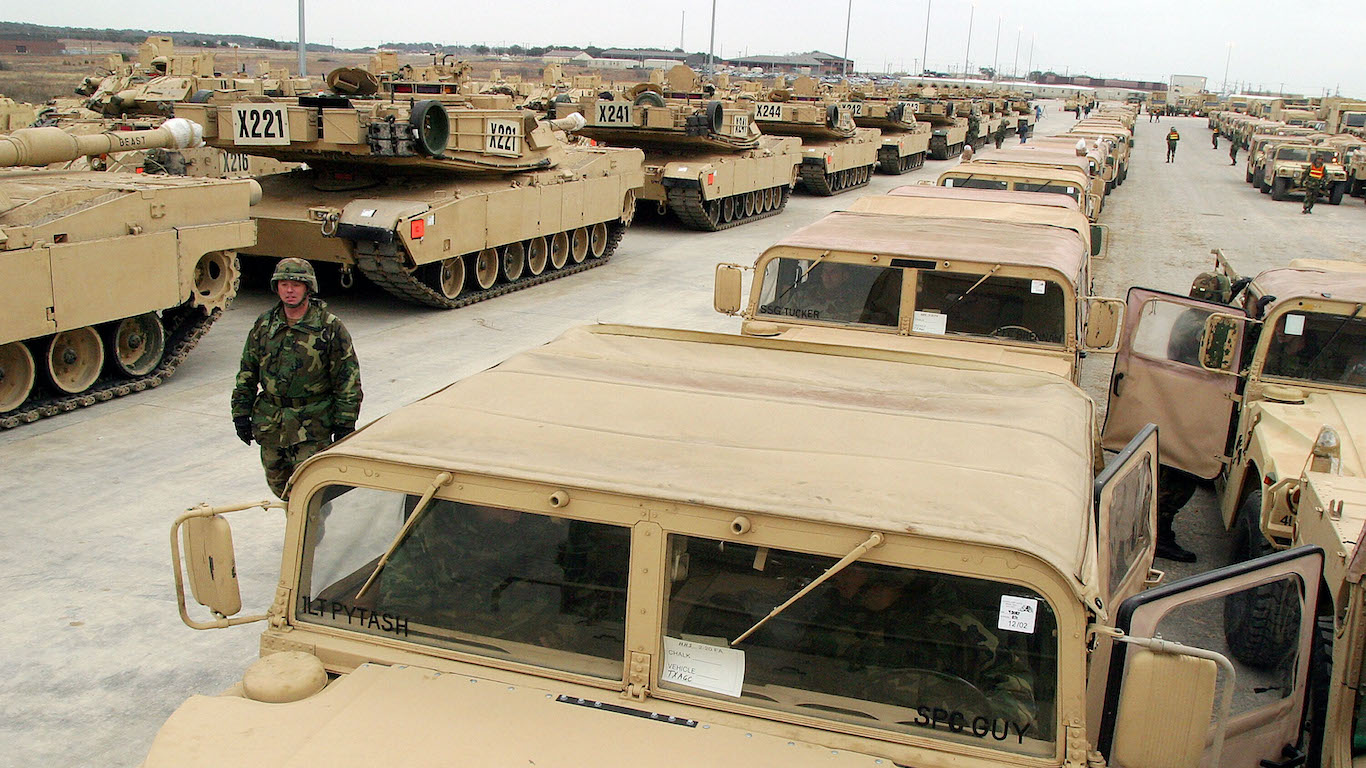
8. M1A2 Abrams
>Type: Tank
The M1A2 Abrams tank was approved for production in 1990 and is the most modern battle tank in the world. This tank is armed with a 120 mm Smooth Bore Cannon, coaxial machine guns, and a 50 cal M2 machine gun. The original iteration of the modern M1 Abrams was capable of accepting different caliber rounds for its turret, including the DU penetrator M833 round (105 mm), which was capable of penetrating 420 mm of rolled homogeneous armor at 2,000 meters. These tanks have been deployed in Iraq and Afghanistan.
9. M3E1
>Type: Multi-purpose Anti-armor Anti-personnel Weapon System (MAAWS)
The M3E1 is capable of destroying lightly armored targets at ranges out to 500 meters and soft targets out to 800 meters. The ammunition is highly explosive and can be used against vehicles, structures, and everything in between.
[in-text-ad-2]
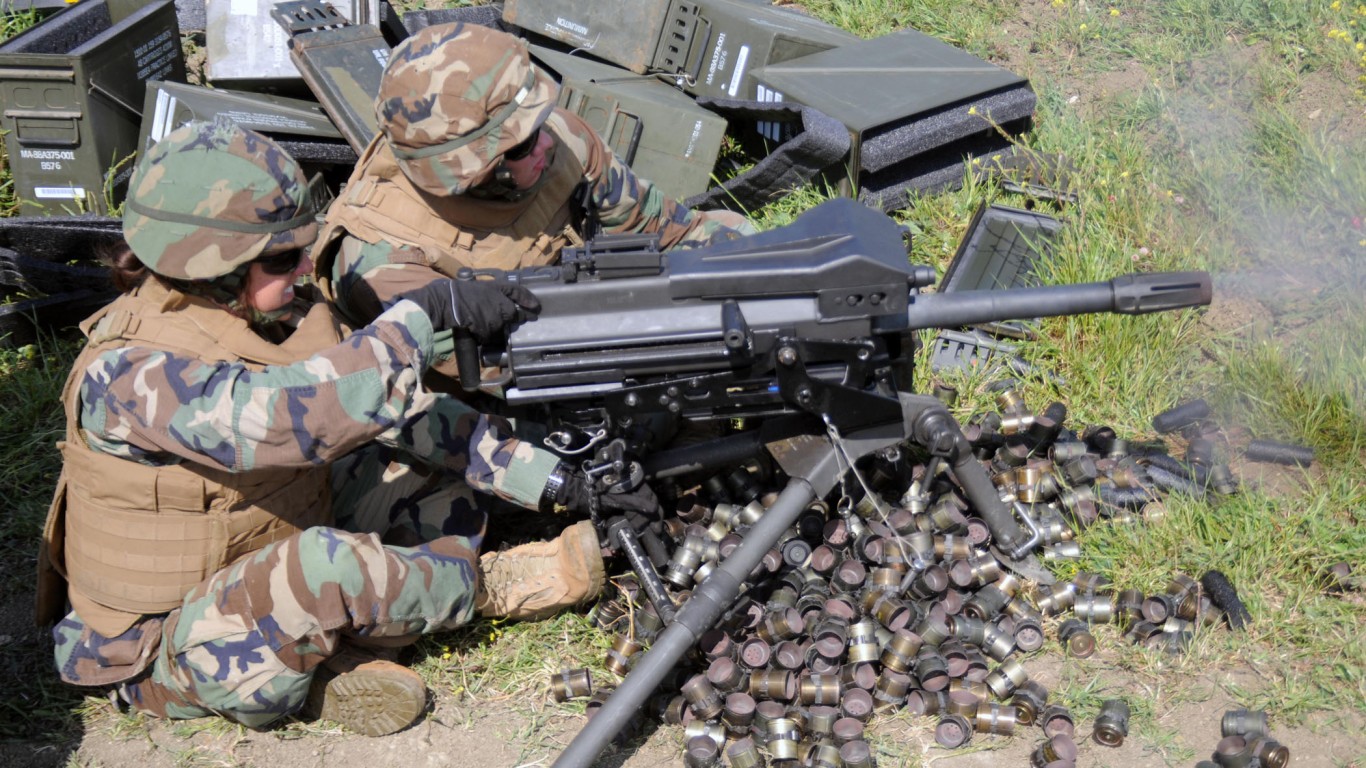
10. MK-19
>Type: Grenade launcher
This machine gun is for grenades. Historically, machine guns have been used for sustained direct fire, providing suppressive fire among other functions. The grenade machine gun is capable of laying down suppressive fire in both offensive and defensive roles, such as defending against helicopters, destroying lightly armored vehicles, and providing high-volume fire with explosive payload.

11. MK-77
>Type: Incendiary bomb
The MK-77 is the only fire bomb still in service. It comes from a long line of incendiary bombs, such as the napalm bomb and white phosphorus bombs, which were used in the Korean and Vietnam wars to deadly effect. Fire bombs are capable of burning down forests, structures, bunkers, and everything in between.
[in-text-ad]

12. MQ-9 Reaper
>Type: Drone
Drone warfare has become increasingly prevalent – and no one does it better than the U.S. The MQ-9 Reaper is one in a series of drones, including the Hunter / Killer, that has carried out bombings in Iraq and Afghanistan, among other places. The drone is capable of carrying up to four Hellfire II anti-armor missiles and two laser-guided bombs. These drones have proven effective at carrying out strikes and eliminating targets around the world.

13. Nimitz-class Aircraft Carrier
>Type: Aircraft carrier
The Nimitz-class aircraft carrier is the crown jewel of the U.S. Navy and is arguably the most powerful water vessel worldwide. The carrier is basically a floating city of soldiers and aircraft ready to go at a moment’s notice with a crew of over 3,000 personnel operating the vessel and over 1,500 piloting and maintaining aircraft, which include fighter jets ready to deploy. It is capable of sustained bombardment and is designed to last 50 years. A new class of carriers, the Ford class, will be replacing the Nimitz class. The first of these, the USS Gerald R. Ford, was set to deploy on October 3.
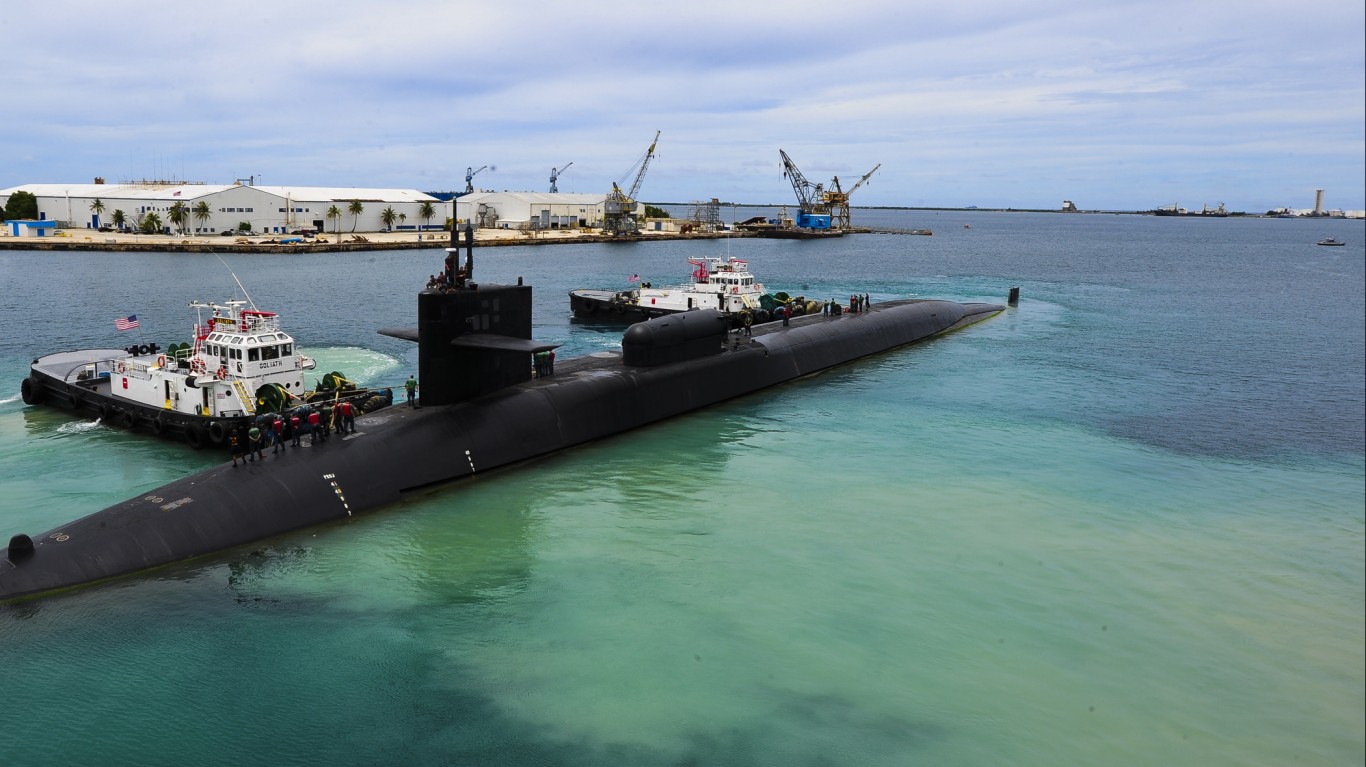
14. Ohio-class Nuclear Submarine
>Type: Nuclear Submarine
Ohio-class nuclear submarines are armed with hard hitting missiles and nuclear bombs capable of destroying whole cities. Armaments include up to 154 Tomahawk missiles, Mk48 torpedoes, and nuclear missiles (see No. 19: UGM-133 Trident II). These submarines offer the U.S. a clandestine platform to strike practically anywhere on the globe with deadly precision. The Ohio class is set to be replaced by the Columbia class starting next decade.
[in-text-ad-2]
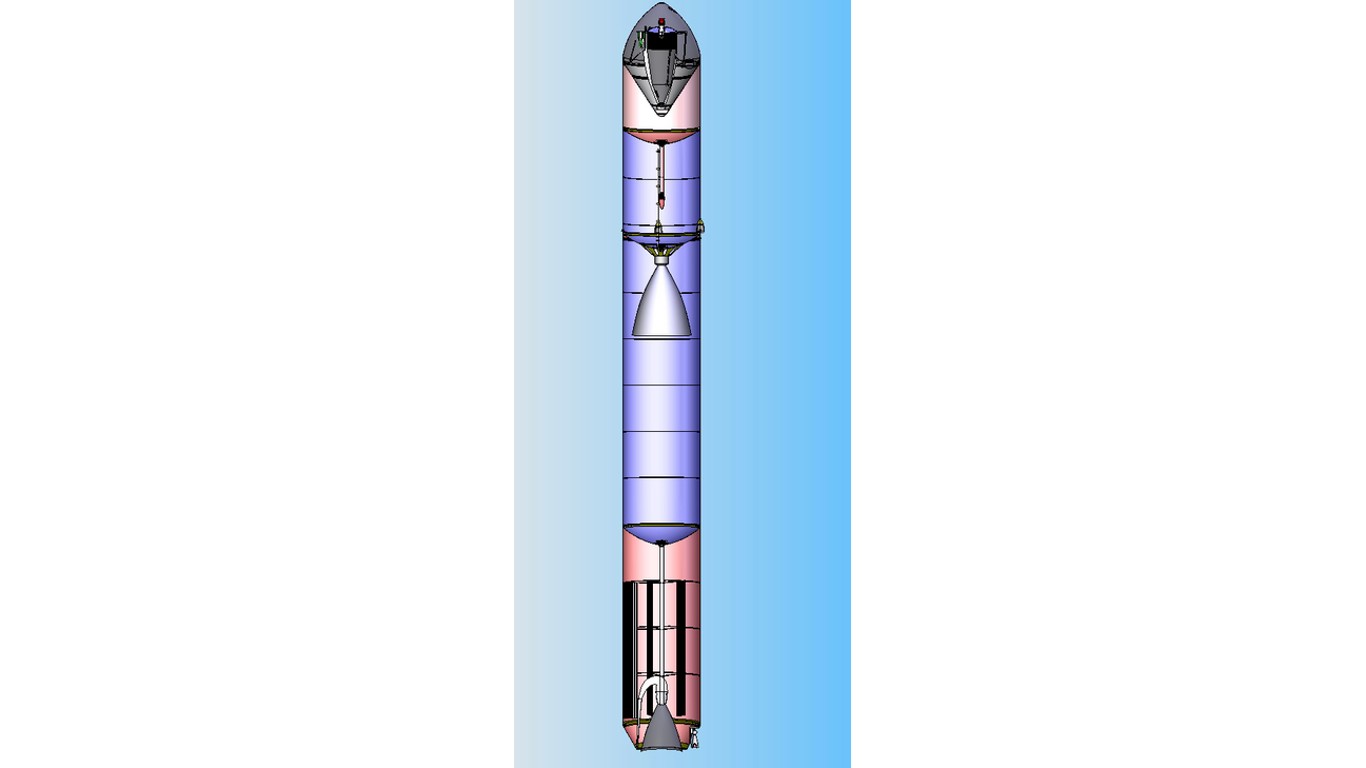
15. RS-28 Sarmat
>Type: Intercontinental ballistic missile
The RS-28, also nicknamed Satan II, is a Russian intercontinental ballistic missile. It is a three-stage, liquid-fueled missile with a range of 18,000 kilometers, and it can carry a wide variety of warhead options. According to Russian media, the Sarmat can load up to 10 large warheads, 16 smaller ones, a combination of warheads and countermeasures, or hypersonic boost-glide vehicles.
16. S-400 Triumf
>Type: Surface to air missile system
The S-400 Triumf is a Russian mobile, surface-to-air missile system capable of engaging aircraft, UAVs, and cruise missiles. The Triumf boasts a range of roughly 250 to 400 kilometers and employs high-explosive fragmentation warheads. These systems are in high demand as China and India have each bought battalions of these from the Russians.
[in-text-ad]
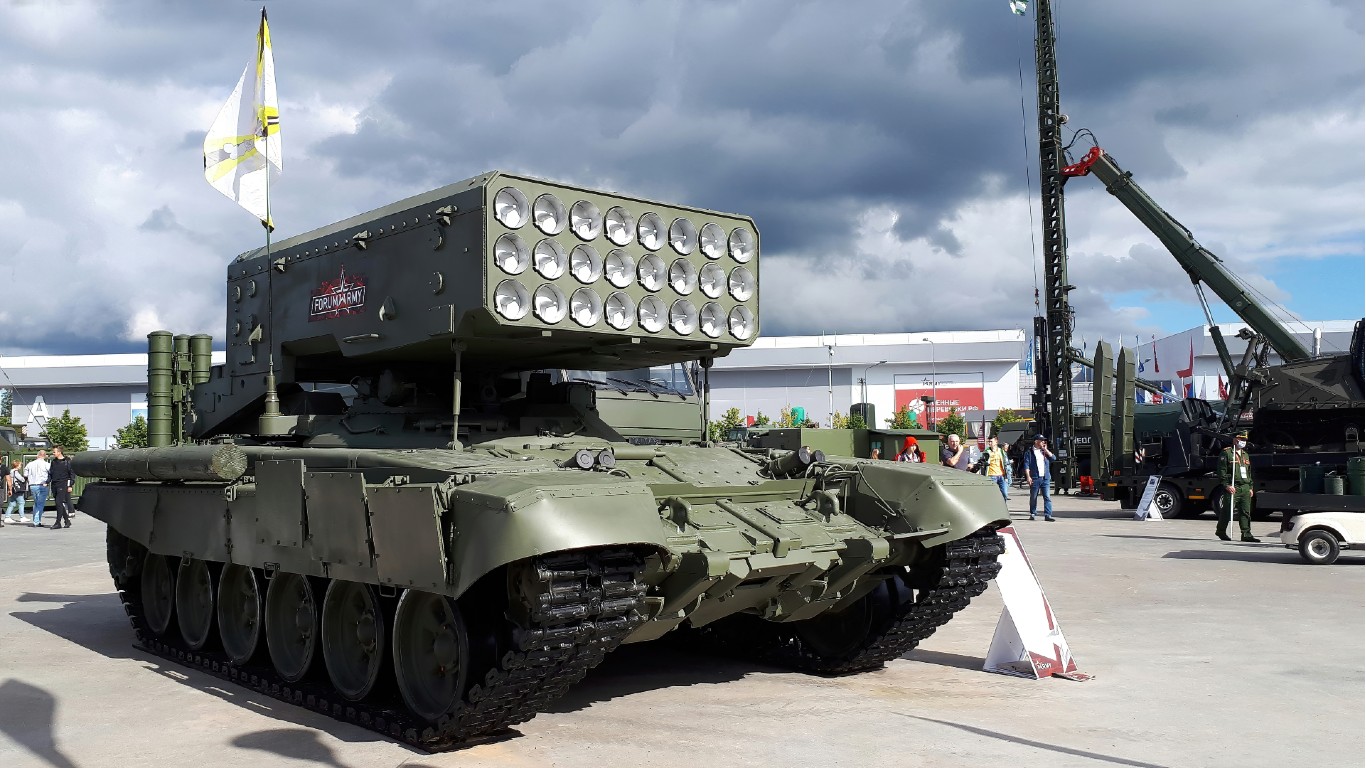
17. TOS-1
>Type: Multiple Launch Rocket System
The TOS-1 is a Russian-made heavy flamethrower system that has been in service since 2001. It was first used in Chechnya and later reported to have been used in the Crimean Peninsula in 2014, and even in Russia’s Invasion of Ukraine. The TOS-1 is used for direct fire support and is regularly used to clear out buildings, field fortifications, and bunkers. The system is generally similar to multiple launch rocket systems with a handful of different rockets at its disposal.
18. Tsar Bomba
>Type: Thermonuclear bomb
The Tsar Bomba, or the “King of Bombs,” also called Big Ivan, is a Soviet thermonuclear bomb. It is the single largest nuclear weapon ever set off, and it produced the most powerful human-made explosion ever recorded. Because of its size, the Tsar Bomba cannot be deployed by a ballistic missile. Instead, it must be dropped by conventional aircraft. In its test it had a 100-megaton capacity, but this was eventually lowered to 50 megatons, which is still about 3,800 times the size of the bomb dropped on Hiroshima.
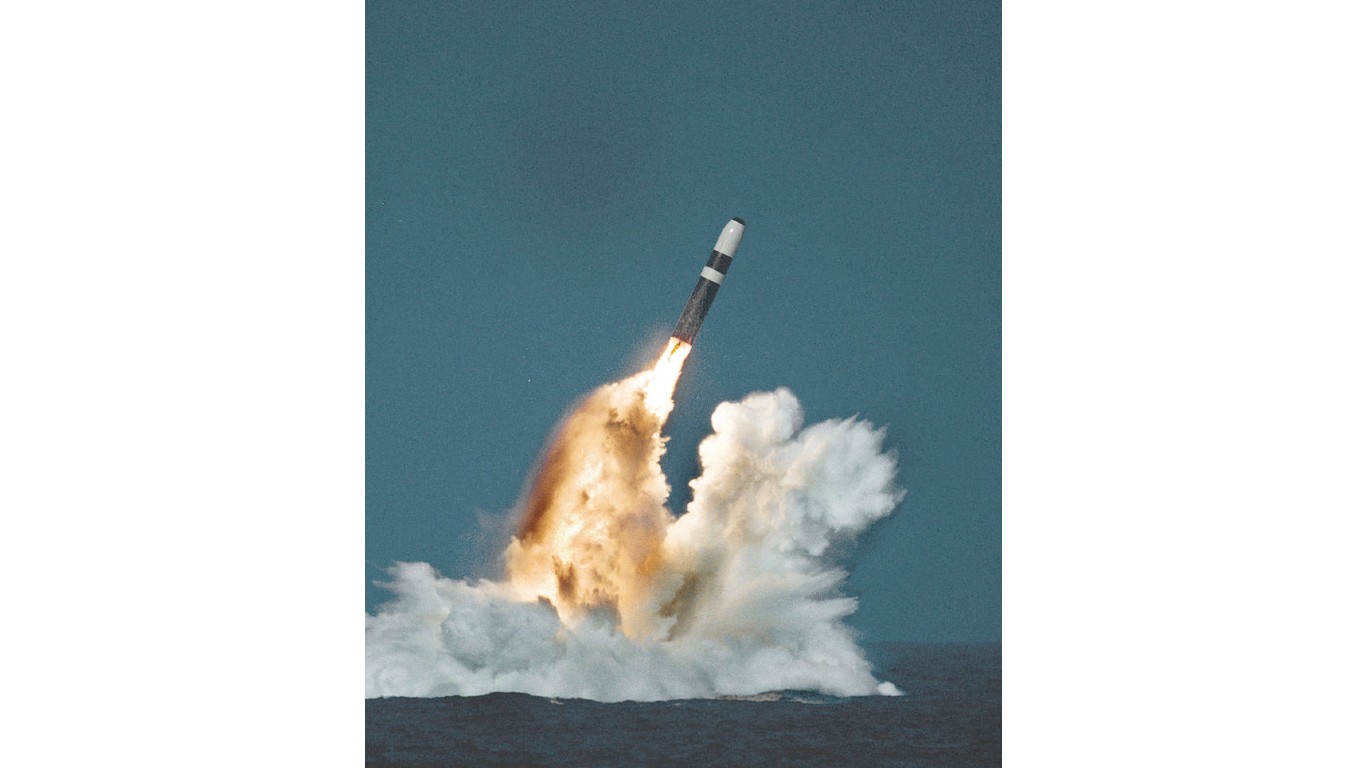
19. UGM-133 Trident II
>Type: Submarine-launched ballistic missile
The Trident II, a submarine-launched intercontinental-range ballistic missile, is housed in the U.S.’s Ohio-class submarines. The warheads have payloads ranging from 100 kilotons to 475 kilotons. For comparison, the nuclear bomb dropped on Hiroshima was only 15 kilotons, so Tridents are orders of magnitude above that.
[in-text-ad-2]
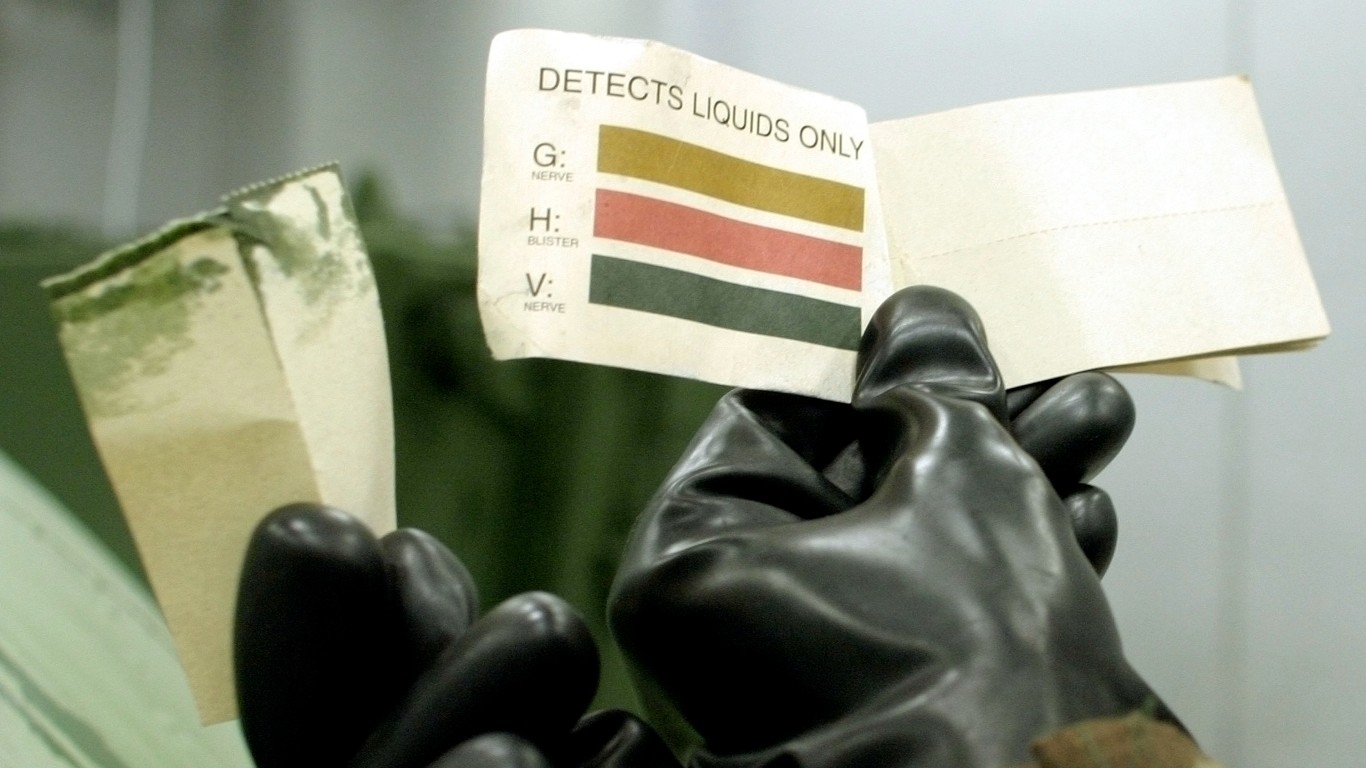
20. VX
>Type: Nerve agent
VX is a chemical warfare agent classified as a nerve agent, the most toxic and rapidly acting of known chemical warfare agents. It works in the same way that pesticides work on insects, only they are more potent. Developed in the 1950s, VX is odorless and tasteless. As countries are seeking to be more humane in warfare, there has been a movement away from chemical warfare, and many are advocating for the destruction of VX stockpiles across the world. Despite the US and Russia being the only countries to have admitted to owning VX stockpiles, other countries are believed to have it in possession including the likes of North Korea.
Want to Retire Early? Start Here (Sponsor)
Want retirement to come a few years earlier than you’d planned? Or are you ready to retire now, but want an extra set of eyes on your finances?
Now you can speak with up to 3 financial experts in your area for FREE. By simply clicking here you can begin to match with financial professionals who can help you build your plan to retire early. And the best part? The first conversation with them is free.
Click here to match with up to 3 financial pros who would be excited to help you make financial decisions.
Have questions about retirement or personal finance? Email us at [email protected]!
By emailing your questions to 24/7 Wall St., you agree to have them published anonymously on a673b.bigscoots-temp.com.
By submitting your story, you understand and agree that we may use your story, or versions of it, in all media and platforms, including via third parties.
Thank you for reading! Have some feedback for us?
Contact the 24/7 Wall St. editorial team.

 24/7 Wall St.
24/7 Wall St.
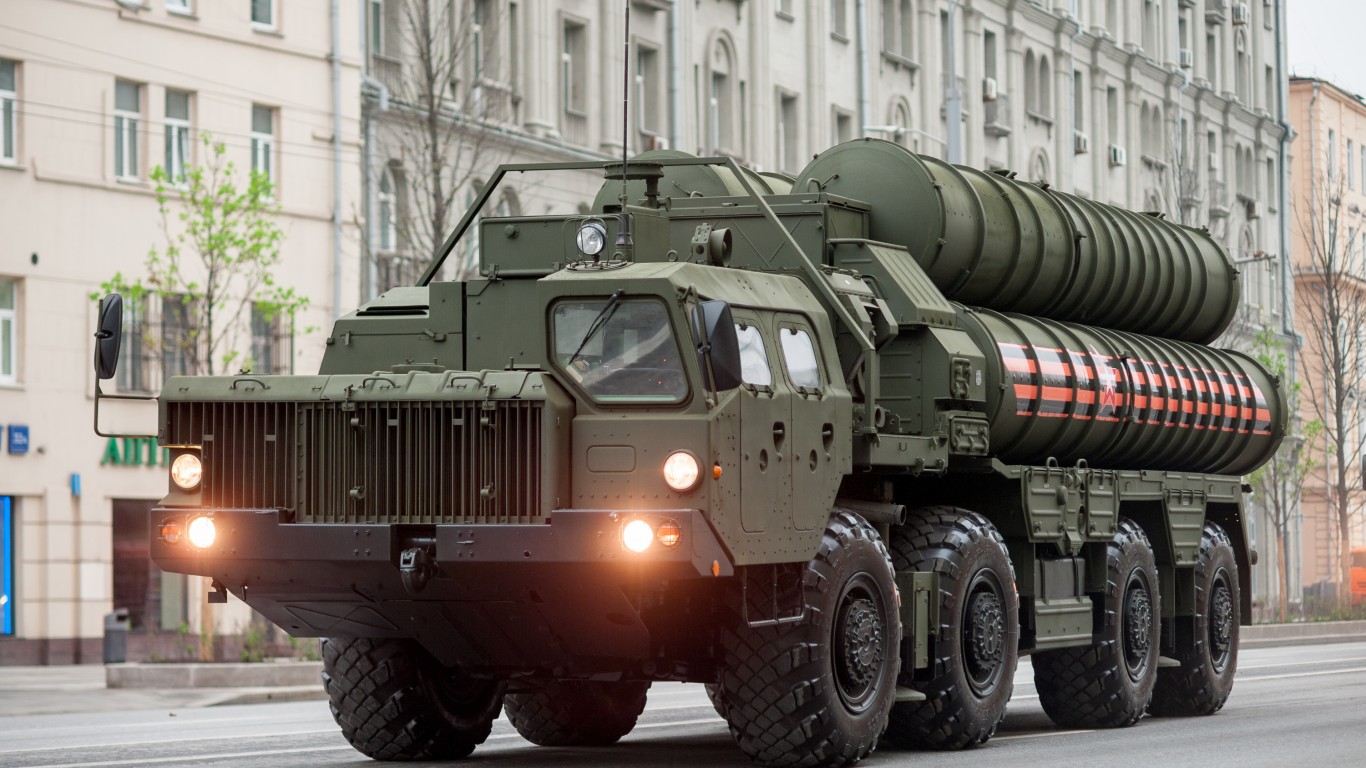
 24/7 Wall St.
24/7 Wall St.